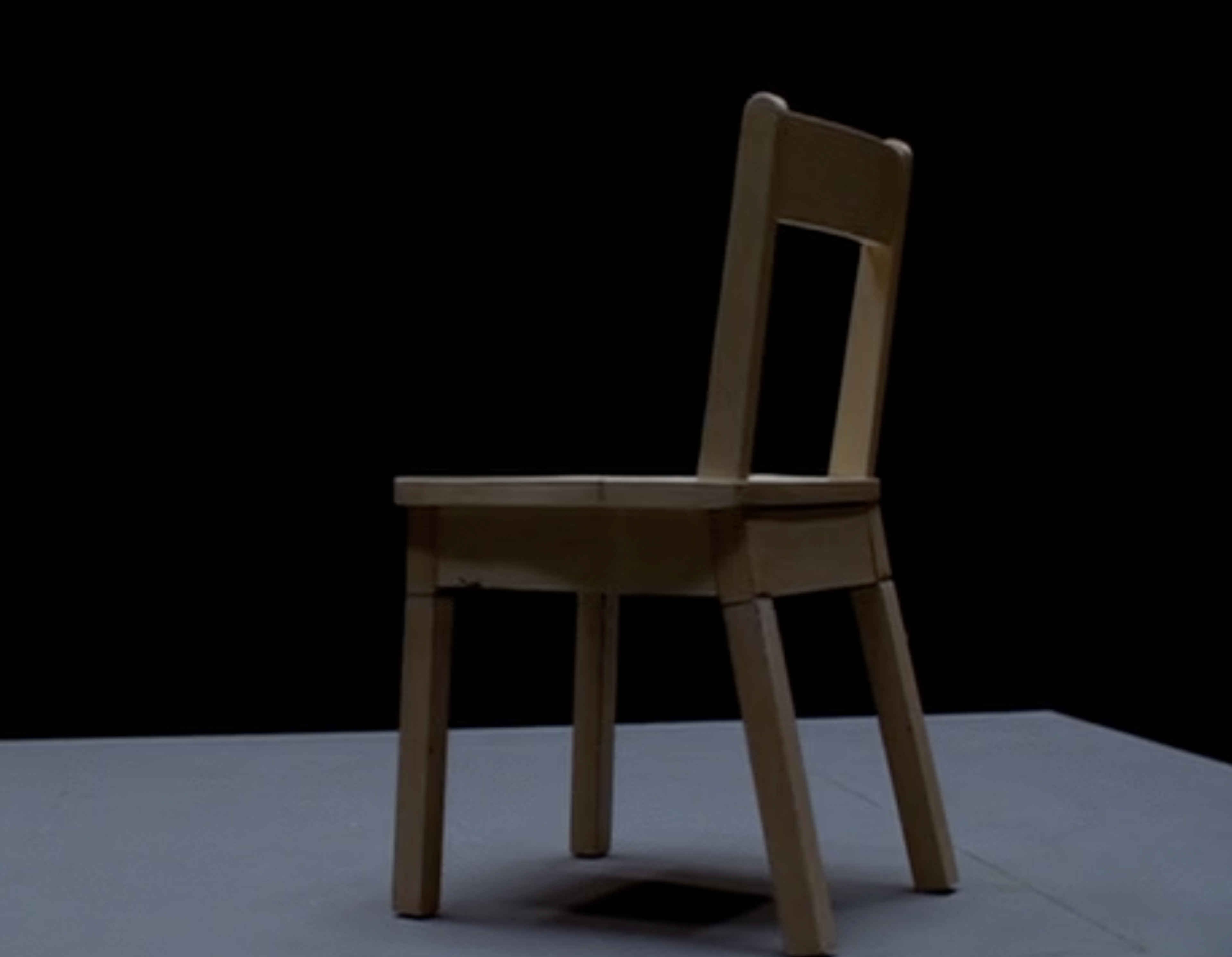The Robotic Chair
Max Dean, Raffaello D’Andrea, Matt Donovan
1984About the study guide
This easy to use guide has been thoughtfully created to assist teachers with their curriculum and lessons.
Download Study GuideAbout the study guide
This easy to use guide has been thoughtfully created to assist teachers with their curriculum and lessons.
Download Study GuideAbout the artwork:
Robotic Chair is an example of kinetic sculpture. It looks like a generic wooden chair - but it suddenly collapses to the floor, throwing its legs, chair back, and seat across the platform. Then Robotic Chair puts itself back together. The performance takes between 5 and 15 minutes and operates through a robotic mechanism hidden from the viewer.
About the artists:
This work was a collaboration between three very different artists: Max Dean, Raffaello D’Andrea and Matt Donovan. Max Dean, born in England (1949), lives and works in Toronto. He is a photographer, performance, installation, and kinetic artist. Raffaello D’Andrea, born 1967 in Italy, is an engineer, entrepreneur, and new media artist. Matt Donovan, born in 1974, is an artist and industrial designer based in Toronto, known for his conceptual work in collaboration, and his own intricate 2D and 3D mosaics made of Lego.
Please preview the short film and then share it with your students. Select one or two guiding questions that reflect your curriculum and can guide student research and inquiry connected to the artwork, artists, and the socio-cultural context in which it was created.
- How do art and technology intersect?
- How might a familiar object become unfamiliar?
- How does collaboration and process of creating reflect and support a larger concept of resilience?
- The chair is symbolic of resilience. How might you create an artwork, dance, musical composition, or poem to illustrate the concept of resilience?
- What role does time, or duration, play in this artwork?
- Explore the contrast between stillness and motion. How might you create a dance, a song, drama performance, artwork, or new invention that play with the contrast between these two concepts?
- Use dance or drama to embody the collapse & reconstruction of an object.
- How might you compose or arrange new or familiar music to express the notion of dismantling & rebuilding?
- Re-vision an every-day object through the design process to create an element of surprise.
- How might this artwork or its impact change when created as an unfamiliar object?
- Use a digital tool to design a prototype to add a kinetic element to a stationary object.
- Use the stages of research and design to graphically represent the solution to another kinetic object. Begin constructing a prototype inspired by the robotic chair.
- Examine how the principle of duration is present in this artwork.
- This artwork calls into question the role of artist. What are the criteria for artist?
- Create a short narrative that uses the chair as a central object for the theme, plot or conflict.
- Explore how coding and other STEAM skills are used in the design of this artwork.
